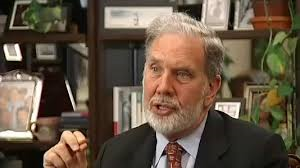 A recent NYT article reports the rising focus of elite schools in arts through museums, performance spaces and increasing offerings of multi- disciplinary courses. As indicated in the article, this is a renewed effort by elite schools to reassert the importance of arts in a well rounded education. Princeton's President Christopher Eisgruber, caught between the opposing sides about Princeton moving its commuter station to one that will house a museum of sorts, maintains that college campuses must allow the "human spirit to soar". It's heartening to note that despite the obvious financial motives of these cultural centers (Yale saw its visitors rise with the opening of its arts museum) - the demand has actually come from the students. Public schools, without the deep pockets of benefactors will undoubtedly have an uphill task following suit. Even so, it is still a promising sign for education. After all, elite schools, whether we like it or not, pave the way for our views on education. Their leadership is crucial in light of the single minded focus on STEM education, and the growing influx of international students to these schools. These students, as future leaders of their countries could serve to carry this definition of a well rounded education, beyond the borders of the United States.
A recent NYT article reports the rising focus of elite schools in arts through museums, performance spaces and increasing offerings of multi- disciplinary courses. As indicated in the article, this is a renewed effort by elite schools to reassert the importance of arts in a well rounded education. Princeton's President Christopher Eisgruber, caught between the opposing sides about Princeton moving its commuter station to one that will house a museum of sorts, maintains that college campuses must allow the "human spirit to soar". It's heartening to note that despite the obvious financial motives of these cultural centers (Yale saw its visitors rise with the opening of its arts museum) - the demand has actually come from the students. Public schools, without the deep pockets of benefactors will undoubtedly have an uphill task following suit. Even so, it is still a promising sign for education. After all, elite schools, whether we like it or not, pave the way for our views on education. Their leadership is crucial in light of the single minded focus on STEM education, and the growing influx of international students to these schools. These students, as future leaders of their countries could serve to carry this definition of a well rounded education, beyond the borders of the United States. Karl Paulnack, in his welcome address at the Boston conservatory, makes a compelling argument for the value and importance of the arts in our lives, Citing the example of the famed "Quartet for the end of time" , of French composer Messiaen from a Nazi concentration camp, Paulnack argues that art is our way of telling ourselves and the world that we are alive. Connoisseur or not, being in the presence of sublime creations of fellow human beings, can be both healing and uplifting. Art is evidence of the unplumbed strengths and capabilities of the human spirit, though some fellowmen, even in this 21st century, may think otherwise. The ISIS has banned any form of art except Islamic calligraphy in the schools in Mosul, Iraq. The ban extends to the use of colors and colored pens. These instances serve only to strengthen our resolve - as the hapless Iraqis already reveal to the discerning- to cherish and nurture the creative outpourings of the human spirit

























